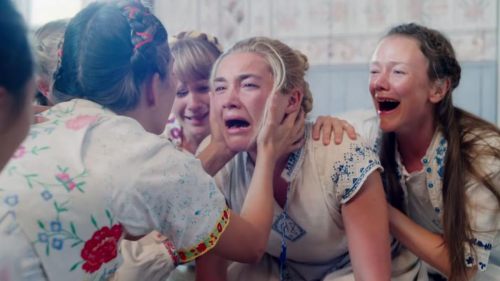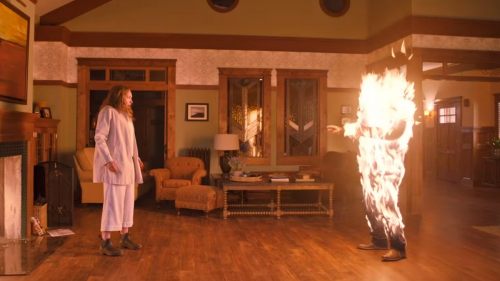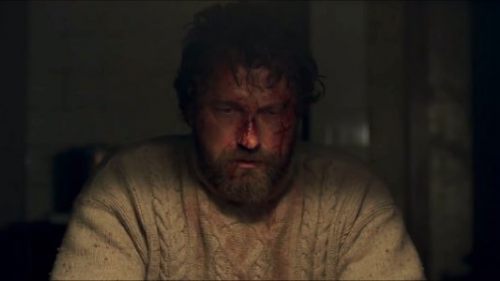Samuel Zimmerman’s Best Of Horror 2015
Horror: it’s where you’ll find a considerable amount of authoritative writing by authors who don’t exactly know a considerable amount about the genre.
In 2015, we saw this concept writ large with the crossover success of It Follows, David Robert Mitchell’s stunning, eerie bad dream of encroaching death. That film, released by Radius theatrically after festival word-of-mouth built to fever pitch, is on its own, an artful, ambiguous and year-end worthy creeper. In a more indie context, it hits critical sweet spots. The film is beautifully constructed, at times enigmatic, and comes from a filmmaker behind the also splendid and human coming-of-age all-nighter, The Myth of the American Sleepover (It Follows is almost its warped companion).
That It Follows is so terrific, and adorned with the aforementioned arthouse-ready traits, puts it in the direct line of sight of those with less-than-stellar awareness of horror. And thus led to a sort of narrative, spurred by a pull quote: that It Follows was one of the only horror movies worth anything in quite some time. Just months after a stellar 2014 (led by The Babadook), this was total fucking nonsense.
But hey, in case that concept persists, or you simply happened to miss any of the varied, thrilling genre films in 2015, what follows is the best of. And hey, in case you’re curious of my taste outside of horror, I’d quickly note the excellence of The Duke of Burgundy (a stylized, incredibly honest masterpiece); Mad Max: Fury Road (you already fucking know); Mustang (see this movie); Magic Mike XXL (an ode to woman’s desire with damn fine dancing); A Pigeon Sat on a Branch Reflecting on Existence (like staring into the void of living and asking, “why?”); Tangerine (a groundbreaking, propulsive dark comedy that doesn’t ask for your tears, but something more important: to come hang out in another world); Girlhood (a totally tough look at French adolescence); Macbeth (the funeral doom eyeball feast of the year) and Justin Bieber’s “Sorry.”
On to the list:
Alleluia (dir. Fabrice du Welz)
The director of Calvaire and Vinyan ushers in his best yet: a totally spellbinding, utterly warped tale of love, sex and murder.
Bone Tomahawk (dir. Craig S. Zahler)
Bone Tomahawk is almost fascinatingly specific in its intent, and incredibly impressive in its achievement. This is a terrifically cast, terrifically acted western that goes batshit Cannibal Holocaust in its final act. What?
Crimson Peak (dir. Guillermo del Toro)
Guillermo del Toro’s latest (one of his best) is an unexpectedly vicious swoon of a period piece. Big violence, big costumes, my heart. I want to live in this movie, and then write a Vox article about my dedicated new existence.
Fulci Lives: The spirit of Lucio was alive and well in We Are Still Here and Hellions. The former, Ted Geoghegan’s refreshing winter ghost story, is clearly influenced by House by the Cemetery, but not dragged down by garish homage. Instead, the influence inspired Geoghegan to craft his own idiosyncratic New England terror marked by fiery murderous ghosts, gore, snowy isolation, Karim Hussain’s fantastic cinematography and Larry Fessenden and Monte Markham’s scene stealing performances. Elsewhere (in Canada) Bruce McDonald, distinctive Pontypool director, returned this year with one of the most visually enrapturing horror films of 2015: the sadly disregarded Hellions. Lensed in infrared for a pitch-perfect palette of Halloween and nightmare logic, McDonald brought illogical horror spectacle in the way many praise the Italian maestro for. Hellions was not bestowed the same affection, despite its sensory odyssey and true atmosphere of eerie, thanks to its disquieting sense of a 1920s All Hallows portrait come to life.
Girlhood: The Midnight Swim (a tremendous debut by Sarah Adina Smith), The Final Girls, When Animals Dream and Anguish all brought wildly affecting, bewitching women’s stories to the forefront of the genre this year. Be it enchanting and authentic sisterhood, a meta mother-daughter movie, or coming-of-age via possession or werewolf. See these films, they’re very special.
Goodnight Mommy (dir. Veronika Franz & Severin Fiala)
A wholly upsetting and severe tale of mistrust between child and mother, featuring the most primal scream I may have ever heard on screen.
It Follows (dir. David Robert Mitchell)
I love this beautiful, scary film. It Follows and its portrait of teens facing down death, be it via sexually transmitted urban legend or suburban existence, is just writhing with bold style -- widescreen images which force you to anxiously search the frame, a stylized world yet recognizable suburban existence, that fucking score.
Last Shift (dir. Anthony DiBlasi)
Quietly released to VOD and on Netflix Instant not long after, Anthony DiBlasi’s Last Shift is a splendid, simple surprise. A rookie cop keeps watch over a now-obsolete police station and is tormented by totally demented satanic imagery over the course of a graveyard shift. DiBlasi knows exactly where to put the camera to induce some old-fashioned heebie jeebies.
Re-released: Two of the best, difficult-to-get-a-hand-on early '80s horror films received beautiful Blu treatments this year: Eckhart Schmidt’s obsessive Der Fan and Gerald Kargl’s destabilizing Angst. Cult Epics finally brought us a fitting way to see the latter, an utterly unreal journey of madness that chronicles a madman’s release from prison and subsequent immediate lust to kill. Erwin Leder plays the sweaty psychotic, his state-of-mind conveyed with groundbreaking cinematography by Zbigniew Rybcznski. This is arguably the best and one of the most crucial home invasion films to exist, a movie in which you are dragged every which way by its ultraviolent lead, with nowhere to go and nothing else to look at. Der Fan is just something to behold, bolstered by Mondo Macabro’s home release. A teenage girl named Simone targets the object of her obsession, a pop singer played by Bodo Staiger (whose band Rheingold supplies the score). Der Fan similarly lures you into an unhinged state, only this is far more hypnotic in construct. When the spell wears off, you’re left in shock.
Slashers: It’s easy to be tough on contemporary slashers. Most of them are such trash, endlessly recycling the tropes of a largely empty subgenre. Belgium’s Cub is something else, however -- lean, feral and totally nasty, with its Steve Moore pulsating score simply rocking your head into the dirt again and again. Meanwhile, Adam Egypt Mortimer targeted today’s teens with contemporary issues (bullying, self-doubt) in a similarly dirty and refreshing take. SKOH deserves extra love for Moira, its supernatural slasher with a particularly neat way of offing her victims.
The Visit (dir. M. Night Shyamalan)
The Visit earns a year-end spot on the basis of its ferocious under-the-house sequence alone. But this could also be Shyamalan’s best film! Preying on our underestimation of and uncertainty around the elderly, while also using a real filmmaker’s skills in the found footage aesthetic, Shyamalan goes some terribly gnarly places, almost reminiscent of the malicious grin of '70s British horror (especially Pete Walker). That’s not to mention a twist right out of Haunt of Fear.



